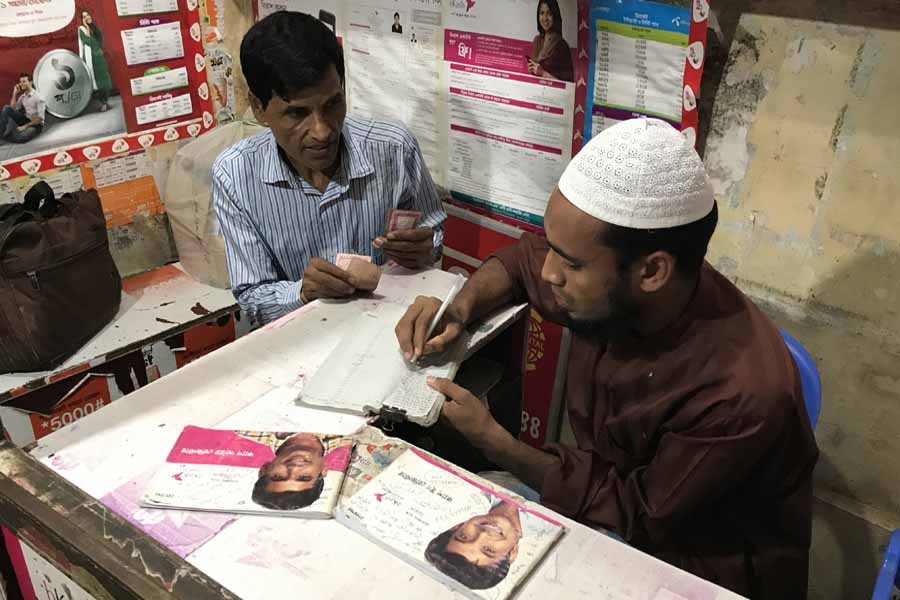
Published :
Updated :

Is small and medium enterprise (SME) credit discriminatory against women? Its gender biasness is reflected in the disbursement of such credit. Women entrepreneurs hardly get this type of loan according to their demand. In the first six months of the current fiscal year, such entrepreneurs received only 2.79 per cent credit whereas 15 per cent of SME credit should be disbursed among them. Also, the directive of the Bangladesh Bank is categorical that 10 per cent of fund under its refinancing facility should go to women entrepreneurs.
The reluctance on the part of banks and financial institutions (FIs) to disburse loans among women entrepreneurs is quite evident. However, banks and FIs argue that they are interested in allocating loans for productive sector but women running manufacturing units are not available in great numbers. It is because of this SME credit is mostly channelled into businesses. Others even complain that many among women entrepreneurs have turned loan defaulters and others approach for credit on behalf of their husbands. This makes banks and FIs extra cautious about credit disbursement among women entrepreneurs.
Development of entrepreneurship among women is a long process, it cannot be achieved overnight and without policy support. The International Labour Organisation (ILO)'s World Employment and Social Outlook: Trends for Women 2017 has highlighted an alarming development in relation to declining women employment in the Asia-Pacific region over the past two decades. This worrying trend is unique to this region and nowhere to be seen in the world. Less participation in work by women points to several disquieting socio-economic developments. One of these is sure to be lack of women entrepreneurship. Productive units owned and run by women are more likely to recruit women employees. The work environment in such units is women-friendly for obvious reasons. Where the environment is hostile to women, its consequences are negative.
If gender parity could be achieved in employment, it would have added value equivalent to $ 3.2 trillion. In work places, women are discriminated against all over the world. It is only natural that their lack of entrepreneurship development owes to this undesirable fact. Now if women entrepreneurship could be developed maintaining the gender parity, how much value could be added to the productive sector is anybody's guess. Even the credit-worthiness of women at a level where they could enjoy the benchmark15 per cent, would have seen a phenomenal value addition to Bangladesh economy.
Blaming women for not qualifying for SME loan makes no sense. The system has long deprived them of economic independence and starting late they are facing hurdles and stiff competition. But then there are areas called women's preserve where they are doing fine. True, such areas are limited and there is a need for diversifying their entrepreneurial skills and management. They should not confine themselves to handicrafts and cottage industries alone. They must step out of the traditional course of economic activities and get involved with an array of productive ventures.
Women are not going to take undue risk. So there is a need for an advisory cell to chart investment plans for women. This has to be backed by training on entrepreneurship development. On-field training will make women familiar with different productive enterprises. If women entrepreneurs are not found eligible for credit, the fault is not theirs. Socio-economic system has been characterised by gender segregation for long. So society is reaping what it has sown. The situation has to be changed step by step in order to ameliorate women's position in small industrial and productive sectors.
Preference for business in times of allocation of SME fund is not nothing new. It happens even in case of male entrepreneurs. Of the total Tk 858.39 billion credit disbursed by banks and FIs in the first six months of the current fiscal year, Tk 199.40 billion went to the productive sector and Tk 102.22 billion to service sector. But the bulk Tk 533.44 billion was allocated for the business sector. As against 24 per cent for productive sector and 12 per cent for service sector, 64 per cent was pumped into the trading sector. A paltry Tk 23.33 billion was disbursed among women entrepreneurs.
When taken into account, the pattern of loan disbursement and the arguments and complaints against allocation for women entrepreneurship betray the unfavourable condition and environment women entrepreneurs have to face. So there is need for bringing about a radical change in the condition and make it as women-friendly as possible. The mindset also has to be changed. There is no strait-jacket formula for grooming a large number of women entrepreneurs. But those performing creditably should be highlighted and their experiences shared in order to bring out more women into productive enterprises.
Today, in terms of business administration degrees, women are not lagging behind. In practical life also their business acumen should be equal to the challenge. The need is to create the right condition for them to translate their ideas into reality. Some have already come forward to make unique contributions to economy and business. Their ground-breaking ideas and entrepreneurial zeal should guide others to follow in their steps. This is exactly how things will move forward for women in industrial and productive ventures. But then policy and other support should be up to the mark.


 For all latest news, follow The Financial Express Google News channel.
For all latest news, follow The Financial Express Google News channel.